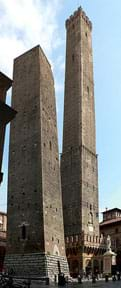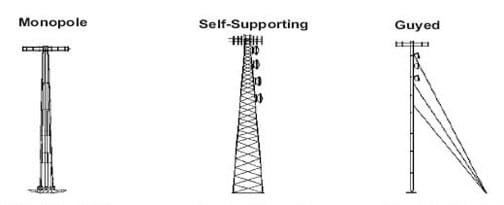Quick Look
Grade Level: Middle school
Time Required: 1 hour
Expendable Cost: US $1.00
Group Size: 3
Subject Areas: Science and Technology
Introduction
Bolded words are vocabulary and concepts to highlight with students during the activity.
Towers have been created in human societies for centuries, serving a variety of purposes, from watch towers to modern cell towers. Engineering designs are subject to requirements and constraints, often including limitations on time, materials and budget, as well as specifications such as size, strength, materials and capacity. Engineers design different types of towers to best suit different purposes: guyed or cable-supported, free-standing or self-standing, and monopole (refer to Figure 1).

Supplies
Each group needs:
- 1 sheet of paper
- 3 x 5-inch notecard
- 30 craft sticks
- 12 inches (30 cm) of masking tape
- 20 inches (50 cm) of string
- ruler
To share with the entire class:
- 1 weighted plastic egg, filled with marbles or pennies
- hot glue and hot glue guns; alternative: masking tape
- (optional) four or five wooden dowels, ~3/16 x 12 inches; hand out if groups ask for them
Subscribe
Get the inside scoop on all things TeachEngineering such as new site features, curriculum updates, video releases, and more by signing up for our newsletter!Procedure
Overview
Students design and build towers that use the provided supplies and can hold a weight 12 inches above the ground for 20 seconds. They may use any of the common tower designs shown in Figure 1 or their own designs, as long as the footprint, excluding any cable supports, fits within the notecard area.
Procedure
- Present and discuss the introduction content.
- Explain the engineering challenge: To design and build a tower that can hold the weighted egg 12 inches above the ground for 20 seconds.
- Show students some sketches of common tower designs (Figure 1).
- Explain some requirements:
- The base of the towers must fit within the area of the notecard, excluding any cable (string) supports that might be part of the design.
- They may not use the egg to test their designs, but they may measure it to make sure it fits on/in their towers.
- Organize the students into groups of three.
- Distribute the supplies to each group.
- Give groups time to draw their design plans. Have them get instructor approval of their designs before they begin construction.
- Give groups a set amount of time to build.
- At the end of the time, have each group test its tower in front of the class, using the weighted egg.
- If time and supplies permit, let groups redesign to improve their designs.

Figure 1. Common tower designs.
Wrap Up - Thought Questions
- What worked well about your design? Why?
- What did not work well? Why not?
- How would you improve your design if you had more time?
More Curriculum Like This

In this activity, student groups design and build three types of towers (guyed or cable-supported, free-standing or self-standing, and monopole), engineering them to meet the requirements that they hold an egg one foot high for 15 seconds.

Los estudiantes diseñan, construyen y ponen a prueba torres hechas de palitos y/o clavijas.

Students are presented with a brief history of bridges as they learn about the three main bridge types: beam, arch and suspension. They are introduced to two natural forces — tension and compression — common to all bridges and structures.
Copyright
© 2016 by Regents of the University of ColoradoLast modified: June 12, 2025









User Comments & Tips